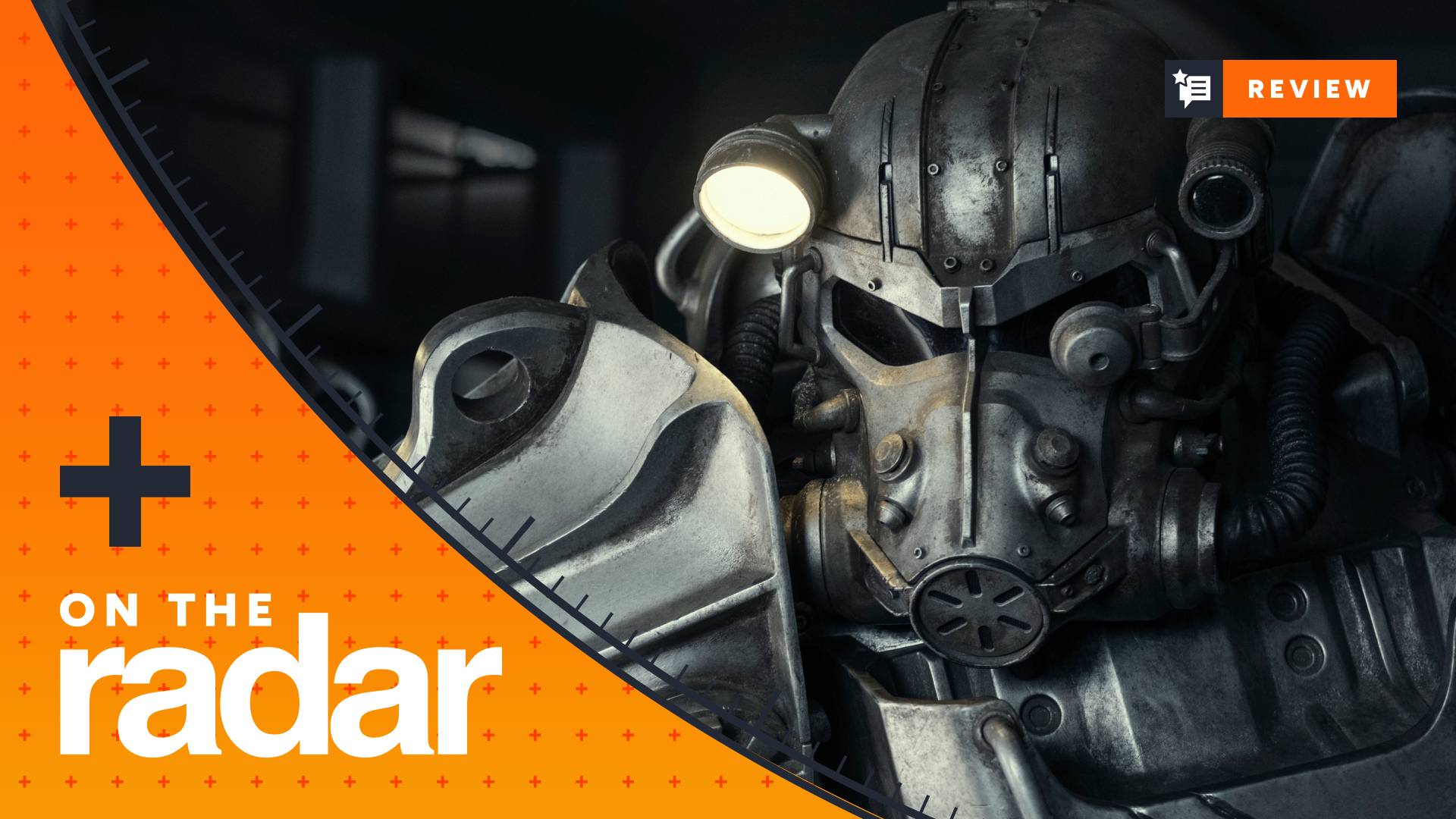BLOG Enhanced Effects: Restoration Or Desecration?
Some Hammer horror fans aren't all that happy about a new restoration of The Devil Rides Out. Ian Berriman sympathises
How much do you respect cinema? Do you think it’s an art form? An art form on a par with, say, renaissance art? I do.
That’s why I’m extremely resistant to any attempt to “improve” upon a movie. I think it’s a peculiarly disrespectful thing to do. Not only to the film, but to its audience. The assumption seems to be that we’re so shallow that we’re incapable of accepting a few frailties in an old film. It’s the same species of impulse which (at the other end of the scale) leads to abominations like a colourised version of It’s A Wonderful Life .
I don’t mind so much when you’re given the option to watch whichever version you want. I was irate when the Star Wars Special Editions (spit) were released on DVD… until they brought out two-disc sets featuring the original, unmolested movies. Those are the only ones I will ever watch.
Another example of how to do it right (although I still have some reservations… more on that later) is the sterling work of the Doctor Who Restoration Team. Numerous classic Who stories have been released on DVD with updated effects which make use of today’s technology. But these are always an optional extra; the consumer has a choice.
What I resent is when the only choice you’re given is this: watch the lovely new spruced-up edition complete with our updates, or watch the grotty old version you’ve had on DVD for years.
One example of this tendency was brought to my attention a couple of weeks ago when an old friend called me up. An avid fan of Star Trek: The Next Generation , he’d bought the newly gussied-up Blu-ray box set of season one and sat down to watch “The Neutral Zone”, an episode he was particularly looking forward to.
Why was he so excited? Not because he was looking forward to seeing the Romulans make their first appearance in Next Gen , but because he’s also a huge Doctor Who geek, and that episode includes an infamously cheeky little Easter egg/in-joke.
Weekly digests, tales from the communities you love, and more
In one scene, very briefly, you see a character’s family tree on a screen. Pause and take a closer look, and you can see that some of the names listed are those of the actors who played the first six Doctors. Well… five of them and “Peter Davidson”, whoever he is!
To his dismay, my friend discovered that while Paramount’s restoration team had been cleaning up the episode they’d also taken it upon themselves to “fix” this supposed error. Why? Lord only knows. Obviously, that moment would be much more easily visible in crisp high-def on a massive plasma screen than it ever was on its original TV broadcast, on VHS, or even on DVD.
But what’s the problem with that? Did they really think it would torpedo the episode if someone spotted that a character seemed to have three all-male pairs of ancestors?
It was a cute little gag, a hidden treat for the cognoscenti. Now it’s been airbrushed away. It still exists of course, but an 16-year-old Who fan coming to the series anew might never get to see it. Now, of course, this is hardly the end of the world. But a change like that fosters a creeping sense of paranoia. If they’ve changed something as piddling and insignificant as that, you find yourself thinking, what else might they have changed?
A week later, I shared my friend’s sudden stab of fanboy horror when I sat down to watch a painstaking new restoration of something I dearly love: Hammer’s classic 1967 Satan-worship thriller The Devil Rides Out ( out on double-play Blu-ray on 22 October , from Studiocanal).
Let’s get a few things straight right away: this restoration is a magnificent piece of work. It’s clearly the result of an astonishing amount of dedication. The film’s been checked frame by frame, with one and a half million specks of dirt digitally removed. I have nothing but respect for the people whose hard work made that possible. The DVD also has a great set of extras. If you love Hammer horror, I urge you to buy it.
But I respectfully disagree with one decision.
In one scene, Christopher Lee’s occult expert and his friends face a series of magical attacks as they shelter inside a chalk circle. It’s a classic sequence, but one slightly undermined by some shoddy optical effects. For example, when the “Angel Of Death” canters in on horseback, bits of his steed’s legs blink out of existence. One effects shot is notorious amongst Hammer fans for having made its way into the film in an unfinished state. When the camera zooms in on the Angel Of Death’s helmeted bonce, and his face-guard drops down to reveal a grinning skeleton, the background is all bluescreen – they never got round to putting something in. In the newly enhanced version, blue flames are licking about behind him. These tweaks are just two of a handful of changes.
Go to page two of this article to see screengrabs comparing the old DVD release and the new restoration
It is my belief that the aim of a restoration should never be to “improve” the film. It should be to return it to the state it was in when it was originally produced – as much as that is really possible (and that won’t always be a clear cut issue). It’d be fine to clean some of the grime off a Da Vinci, if it can be done without damaging the paintwork underneath.
So this kind of thing is an anathema to me. Like I said, the Doctor Who Restoration Team get it pretty much spot on, but I don’t even approve of everything they’ve done. In some cases, they’ve digitally fixed production errors like boom-mike shadows or moments where you can see the edge of the seat.
Thing is, some of us love boom-mike shadows. We like spotting a film’s flaws. Not in a sneery way, so we can point and laugh like Nelson Muntz, but because those flaws are revealing. A boom-mike shadow in Doctor Who reminds you how challenging it was to make the programme, how they didn’t have the luxury of countless retakes. Similarly, if a film has unfinished visual effects – like The Devil Rides Out did – that tells you something about the circumstances of its production. For me, “fixing” something like that is akin to painting eyebrows on the Mona Lisa (In case you hadn’t noticed, she doesn’t have any!) A movie is a historical document. Fiddle with it too much and you start veering dangerously close to desecration.
Now, the changes in The Devil Rides Out are comparatively subtle. This isn't George Lucas-land. You probably won’t spot them unless you’re a Hammer nut – or watch the featurette on the restoration, which discusses them (there’s certainly full disclosure).
All the same, it seems like an unusual approach to take with, all of things, a Hammer film. If any fanbase is likely to be resistant to this kind of tinkering tomfoolery, surely it’s Hammer’s? Watch the featurettes on Hammer’s restorations and they’re not exactly crammed with twentysomethings singing their praises – it’s all faintly tweedy old buffers (and I say this as someone cruising towards tweedy old bufferdom myself…) Most fans of Hammer movies don’t watch them expecting amazing visual effects. They watch them expecting rubber bats on strings, stock footage and matte lines. That is, for many, an essential part of their charm.
Why make any enhancements at all? I can see the arguments. Firstly, if the original filmmakers could have produced better effects, they surely would have; only considerations of budget and time prevented them from doing so. Secondly, in the wake of the revived Hammer’s success with films like The Woman In Black , there’s potentially a whole new audience for their back catalogue. I've seen it argued (thought not by Hammer) that “The kids” of today demand higher standards – well, so we’re told… I’m a little sceptical about that. I want Hammer’s restorations to sell well because I want them to finance more, and if I thought enhanced effects were key to sales, I’d probably grit my teeth and accept it without making a peep of protest.
But it’s not as if these enhancements upgrade the effects to modern standards anyway (thankfully, as I said they’re much more subtle than that). When we see that skull, it’s still a rather risible moment of bathos, liable to make you guffaw. I don’t believe that finishing the effect off is going to wow any younglings. And other alterations seem so minimal as to be pointless. In the climax of the film, a lightning bolt strikes a satanic altar. The old effect has now been replaced with a slightly different lightning bolt. Is that going to send teens running to HMV to buy a 45-year-old film? Probably not.
Traditionalists like me (or Luddites, if you prefer!) still have a choice, of course. They don’t have to buy the new Blu-rays of Next Gen and The Devil Rides Out . No-one’s holding a gun to their head and frogmarching them down to HMV. They can stick with the existing DVD versions. But that would be such a shame, because in all other respects these new restorations are stunning.
Me? In both cases I’ll be getting the new version, but keeping hold of my old DVDs, as a more faithful record of what Gene Roddenberry, Terence Fisher et al actually shot decades ago, while wistfully wishing there could have been another way.
Ian Berriman twitter.com/ianberriman
Continue to page two of this article to see screengrabs comparing the old DVD release and the new restoration
Ian Berriman has been working for SFX – the world's leading sci-fi, fantasy and horror magazine – since March 2002. He's also a regular writer for Electronic Sound. Other publications he's contributed to include Total Film, When Saturday Comes, Retro Pop, Horrorville, and What DVD. A life-long Doctor Who fan, he's also a supporter of Hull City, and live-tweets along to BBC Four's Top Of The Pops repeats from his @TOTPFacts account.


